MicroRNA-15b modulates cellular ATP levels and degenerates mitochondria via Arl2 in neonatal rat cardiac myocytes
- PMID: 20007690
- PMCID: PMC2836096
- DOI: 10.1074/jbc.M109.082610
MicroRNA-15b modulates cellular ATP levels and degenerates mitochondria via Arl2 in neonatal rat cardiac myocytes
Abstract
MicroRNAs (miRNAs or miRs) are small, non-coding RNAs that modulate mRNA stability and post-transcriptional translation. A growing body of evidence indicates that specific miRNAs can affect the cellular function of cardiomyocytes. In the present study, miRNAs that are highly expressed in the heart were overexpressed in neonatal rat ventricular myocytes, and cellular ATP levels were assessed. As a result, miR-15b, -16, -195, and -424, which have the same seed sequence, the most critical determinant of miRNA targeting, decreased cellular ATP levels. These results suggest that these miRNAs could specifically down-regulate the same target genes and consequently decrease cellular ATP levels. Through a bioinformatics approach, ADP-ribosylation factor-like 2 (Arl2) was identified as a potential target of miR-15b. It has already been shown that Arl2 localizes to adenine nucleotide transporter 1, the exchanger of ADP/ATP in mitochondria. Overexpression of miR-15b, -16, -195, and -424 suppressed the activity of a luciferase reporter construct fused with the 3'-untranslated region of Arl2. In addition, miR-15b overexpression decreased Arl2 mRNA and protein expression levels. The effects of Arl2 siRNA on cellular ATP levels were the same as those of miR-15b, and the expression of Arl2 could restore ATP levels reduced by miR-15b. A loss-of-function study of miR-15b resulted in increased Arl2 protein and cellular ATP levels. Electron microscopic analysis revealed that mitochondria became degenerated in cardiomyocytes that had been transduced with miR-15b and Arl2 siRNA. The present results suggest that miR-15b may decrease mitochondrial integrity by targeting Arl2 in the heart.
Figures
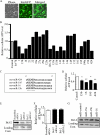
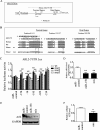
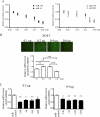
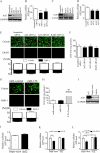
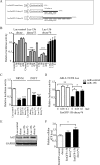
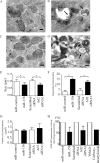
Similar articles
-
LncRNA UCA1 Promotes Mitochondrial Function of Bladder Cancer via the MiR-195/ARL2 Signaling Pathway.Cell Physiol Biochem. 2017;43(6):2548-2561. doi: 10.1159/000484507. Epub 2017 Nov 1. Cell Physiol Biochem. 2017. PMID: 29130995
-
MicroRNA-15b enhances hypoxia/reoxygenation-induced apoptosis of cardiomyocytes via a mitochondrial apoptotic pathway.Apoptosis. 2014 Jan;19(1):19-29. doi: 10.1007/s10495-013-0899-2. Apoptosis. 2014. PMID: 24043355
-
Circular RNA Ttc3 regulates cardiac function after myocardial infarction by sponging miR-15b.J Mol Cell Cardiol. 2019 May;130:10-22. doi: 10.1016/j.yjmcc.2019.03.007. Epub 2019 Mar 12. J Mol Cell Cardiol. 2019. PMID: 30876857
-
Higher order signaling: ARL2 as regulator of both mitochondrial fusion and microtubule dynamics allows integration of 2 essential cell functions.Small GTPases. 2016 Oct;7(4):188-196. doi: 10.1080/21541248.2016.1211069. Epub 2016 Jul 11. Small GTPases. 2016. PMID: 27400436 Free PMC article. Review.
-
[Roles of miR-15b in endothelial cell function and their relevance to vascular diseases].Yi Chuan. 2015 Feb;37(2):121-127. doi: 10.16288/j.yczz.14-288. Yi Chuan. 2015. PMID: 25665638 Review. Chinese.
Cited by
-
miR-146a inhibits mitochondrial dysfunction and myocardial infarction by targeting cyclophilin D.Mol Ther Nucleic Acids. 2021 Feb 4;23:1258-1271. doi: 10.1016/j.omtn.2021.01.034. eCollection 2021 Mar 5. Mol Ther Nucleic Acids. 2021. Retraction in: Mol Ther Nucleic Acids. 2023 Dec 26;35(1):102106. doi: 10.1016/j.omtn.2023.102106. PMID: 33717647 Free PMC article. Retracted.
-
Suppression of Induced microRNA-15b Prevents Rapid Loss of Cardiac Function in a Dicer Depleted Model of Cardiac Dysfunction.PLoS One. 2013 Jun 19;8(6):e66789. doi: 10.1371/journal.pone.0066789. Print 2013. PLoS One. 2013. PMID: 23840532 Free PMC article.
-
Mitochondria and Oxidative Stress in the Cardiorenal Metabolic Syndrome.Cardiorenal Med. 2012 May;2(2):87-109. doi: 10.1159/000335675. Epub 2012 Feb 7. Cardiorenal Med. 2012. PMID: 22619657 Free PMC article.
-
Functions of microRNAs in cardiovascular biology and disease.Annu Rev Physiol. 2013;75:69-93. doi: 10.1146/annurev-physiol-030212-183737. Epub 2012 Nov 13. Annu Rev Physiol. 2013. PMID: 23157557 Free PMC article. Review.
-
MitomiRs: their roles in mitochondria and importance in cancer cell metabolism.Radiol Oncol. 2021 Nov 19;55(4):379-392. doi: 10.2478/raon-2021-0042. Radiol Oncol. 2021. PMID: 34821131 Free PMC article. Review.
References
Publication types
MeSH terms
Substances
LinkOut - more resources
Full Text Sources
Other Literature Sources
Molecular Biology Databases
Research Materials

